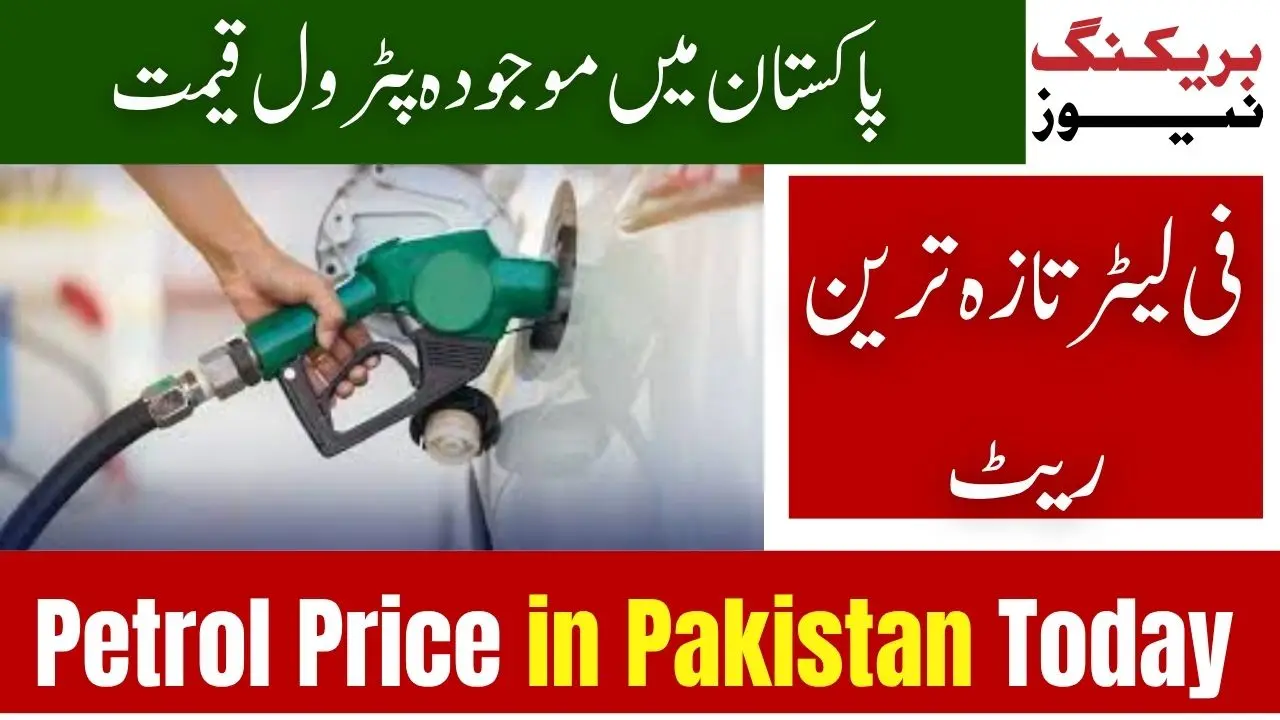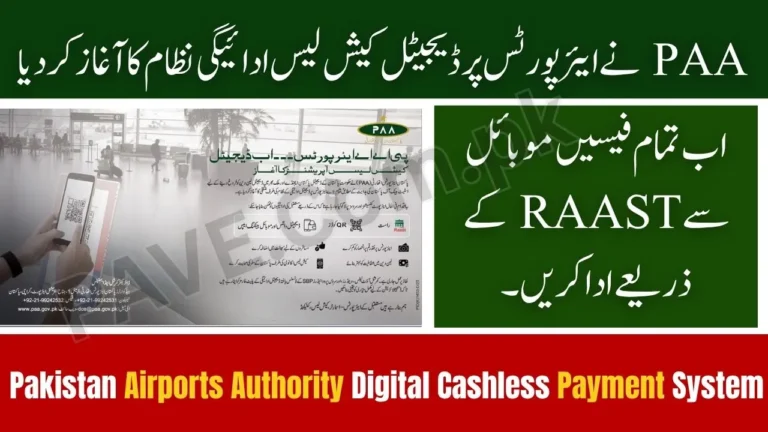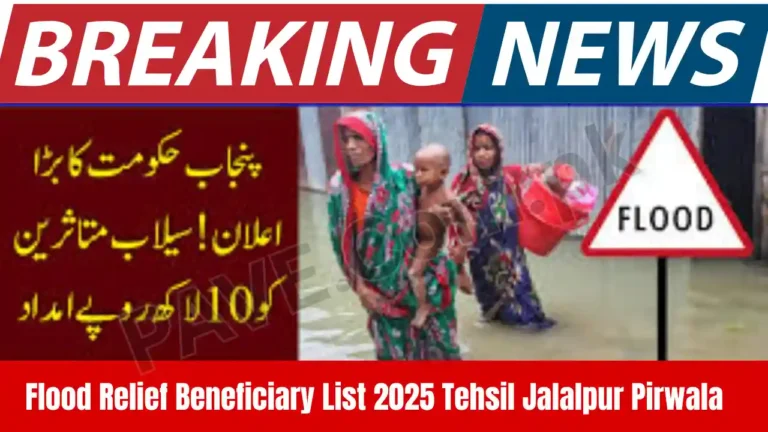Petrol Price in Pakistan Today – Check Latest Price Per Litre
Petrol prices in Pakistan remain one of the most discussed economic indicators. Whether you are a driver, student, or business owner, the cost of fuel directly shapes daily life. The government reviews and updates petrol prices twice every month to reflect changes in international oil markets and currency trends.
Today’s petrol price represents more than just the amount paid at the pump — it reflects the state of Pakistan’s economy, its exchange rate stability, and fiscal policies. This article explains the current petrol price in Pakistan, factors affecting it, and its impact across households, transport, and industries.
How much does 1 litre of petrol cost?
As of late October 2025, 1 litre of petrol in Pakistan costs around Rs. 263. This official rate reflects the government’s latest fortnightly fuel review. Prices are uniform across the country, although minor differences may appear in remote regions due to freight and transport costs.
What is the price of petrol in Pakistan today 24 October 2025?
On 24 October 2025, the petrol price in Pakistan remains steady at Rs. 263 per litre, following the mid-month revision. This current rate offers slight relief to motorists after several months of fluctuation, balancing global oil trends and local exchange rate movements.
What is the price of petrol in Pakistan on 24 October 2025?
The price of petrol in Pakistan on 24 October 2025 stands at approximately Rs. 263 per litre. The government reviews rates twice a month, ensuring local consumers pay prices aligned with international crude costs and domestic market conditions.
What is the price of petrol in Pakistan in October 2025?
During October 2025, the average petrol price in Pakistan hovered between Rs. 263 and Rs. 268 per litre. This moderate range reflects a relatively stable global oil market and slight strengthening of the rupee, allowing the government to maintain consistent rates throughout the month.
Latest Petrol Price in Pakistan – Current Rate Per Litre
The current petrol price in Pakistan is approximately Rs. 263 per litre, while high-speed diesel stands near Rs. 275 per litre.
These new rates are effective nationwide, covering Karachi, Lahore, Islamabad, Faisalabad, Multan, Peshawar, and Quetta. The minor decrease from the previous fortnight offers limited relief to consumers already coping with high inflation.
Although petrol prices are largely uniform across Pakistan, small regional variations may occur because of transportation and freight charges.
Reasons Behind Petrol Price Fluctuations in Pakistan
Fuel prices are revised every fifteen days due to several inter-connected factors. Here’s what drives these fluctuations:
1. Global Oil Market & International Crude Rates
Pakistan imports most of its oil, making its economy sensitive to global crude oil prices. Political tensions, OPEC production decisions, and global demand directly affect local pump rates.
2. Exchange Rate Impact on Petrol Prices
Because oil imports are paid in US dollars, any depreciation of the Pakistani Rupee raises local prices. A stable or stronger rupee helps reduce the domestic cost of petrol.
3. Government Taxes & Petroleum Levy
A major portion of the retail petrol price includes government taxes, duties, and the petroleum development levy. These charges vary according to fiscal needs, influencing every price adjustment.
4. Refining, Distribution & Transport Costs
Refining, storage, and transportation costs are included in the final petrol price. Remote regions often pay slightly more due to longer freight routes.
5. OGRA Price Review Mechanism
The Oil and Gas Regulatory Authority (OGRA) reviews fuel prices twice monthly, ensuring that domestic rates follow global trends and rupee fluctuations.
Impact of Petrol Price in Pakistan on Daily Life
The petrol price directly affects every citizen. Here’s how:
1. Petrol Price & Household Budgets
For families, petrol price increases mean higher transportation costs, delivery charges, and ultimately higher grocery prices. Even a Rs. 5 per litre rise adds noticeable pressure to monthly budgets.
2. Transport Sector & Public Fares
Buses, taxis, ride-hailing apps, and goods carriers base their fares on fuel costs. A rise in petrol or diesel instantly pushes up transport fares and logistics charges.
3. Agriculture Sector & Rural Fuel Demand
In rural Punjab and Sindh, diesel and petrol are vital for tractors, tube wells, and harvesting machinery. Higher fuel prices raise the cost of cultivation and indirectly increase food prices.
4. Industrial & Business Growth
Industries rely on petrol and diesel for power generation and product delivery. When fuel prices climb, production costs rise and competitiveness declines. Lower prices stimulate growth and export efficiency.
5. Youth Mobility & Electric Vehicle Transition
Young commuters and students are shifting toward electric bikes and shared rides due to high petrol rates. This shift marks the early stage of Pakistan’s transition to EV mobility.
Petrol Price History in Pakistan – Monthly Trends
| Month (2025) | Petrol Price (PKR/Litre) | Change |
|---|---|---|
| July 2025 | Rs. 266 | Increase |
| August 2025 | Rs. 264 | Slight Decrease |
| September 2025 | Rs. 268 | Increase |
| October 2025 | Rs. 263 | Decrease |
| November 2025 | Expected Review | — |
The above table shows how petrol prices in Pakistan have remained within Rs. 260–270 per litre, showing high volatility tied to global energy trends and the rupee’s performance.
Read More: Petrol vs Electric Bikes Punjab e-Bike Scheme 2025
Economic Impact of Petrol Price in Pakistan
Fluctuating fuel prices have far-reaching effects on the national economy.
1. Inflation and Price Index
Fuel cost increases push up transportation and production costs, raising the prices of everyday goods and contributing directly to inflation.
2. Burden on Small Businesses
Small traders, delivery riders, and transporters face immediate challenges when petrol becomes expensive. Their profit margins shrink, forcing many to increase service prices.
3. Government Fiscal Pressure
The government must balance consumer relief with fiscal sustainability. Reducing petrol prices can mean losing billions in revenue, while hikes often cause public backlash.
4. Push Toward Renewable Energy
Repeated fuel hikes are motivating both individuals and policymakers to explore renewable energy and electric vehicle options. This long-term shift could reduce import dependency.
Public Reaction to Petrol Price Changes in Pakistan
Every time the government announces a new fuel rate, social media and news channels erupt with reactions. A small reduction brings momentary relief, but people often demand larger cuts matching international market drops.
The general expectation is that better planning, efficient taxation, and investment in local refineries will help maintain more stable prices in the future.
Future Outlook – Petrol Price Forecast in Pakistan
Experts predict moderate volatility in the coming months. Global crude oil prices, regional stability, and the exchange rate will continue to dictate Pakistan’s fuel rates.
If the rupee strengthens and international oil supply remains steady, petrol prices could remain near current levels. However, any global tension or dollar appreciation may push rates upward again.
The government’s long-term goal is to stabilize prices through local refining capacity, diversified import sources, and alternative energy programs.
Fuel Efficiency Tips for Pakistani Drivers
Saving petrol is now as important as earning it. Here are some practical fuel-saving tips:
- Maintain Your Vehicle: Regular servicing improves mileage and reduces consumption.
- Drive Steadily: Avoid harsh acceleration and unnecessary braking.
- Check Tire Pressure: Proper air levels help maintain efficiency.
- Plan Routes Wisely: Use shortest paths to save distance and time.
- Avoid Idling: Turn off engines during long waits.
- Travel Light: Remove extra weight from vehicles.
- Share Rides: Carpooling reduces individual fuel cost.
- Switch to Electric or Hybrid: Consider long-term savings via EV options.
Check Also: Today Gold Price in Pakistan – 24K & 22K Rate Per Tola and Gram (Updated October 2025)
Frequently Asked Questions (FAQs) About Petrol Prices in Pakistan:
Q1: What is the petrol price in Pakistan today?
Today’s petrol price in Pakistan is around Rs. 263 per litre, valid nationwide.
Q2: Why does the government change petrol prices every 15 days?
Prices are revised to match international crude oil rates, exchange rate movements, and domestic levies.
Q3: Does petrol cost the same in every city?
Yes, petrol rates are generally uniform across Pakistan, with minor freight differences.
Q4: How does petrol price affect inflation?
Higher petrol rates raise transport and manufacturing costs, directly increasing market prices for goods.
Q5: What can reduce petrol dependency in Pakistan?
Local oil refining, renewable energy, and widespread use of electric vehicles can reduce long-term dependence on imported fuel.
Conclusion – Petrol Price & Economic Stability in Pakistan
The petrol price in Pakistan today reflects a delicate balance between global energy trends and domestic financial realities. At approximately Rs. 263 per litre, it serves as both an economic signal and a daily expense impacting millions.
For consumers, careful fuel use and efficient travel are the best strategies to manage rising costs. For policymakers, investment in local refineries, renewable energy, and electric-mobility infrastructure is vital to secure long-term stability.
As Pakistan continues to evolve, fuel price management will remain a cornerstone of economic planning — affecting inflation, industry growth, and household affordability alike.







